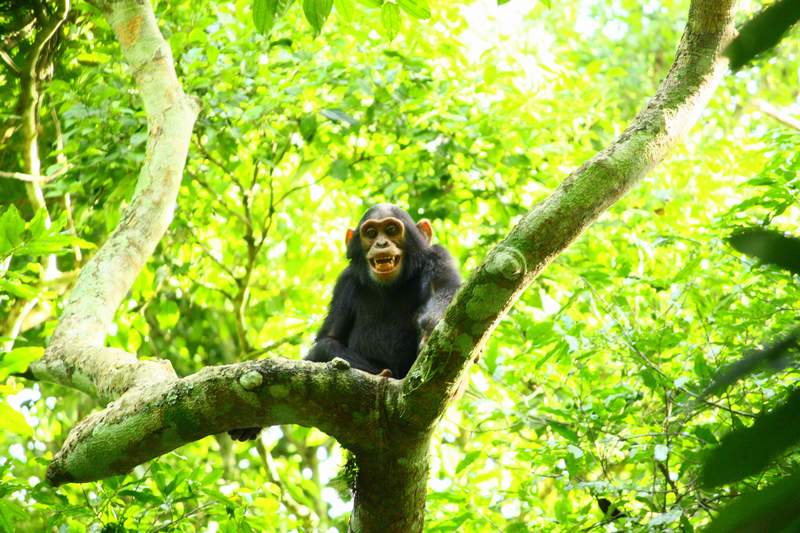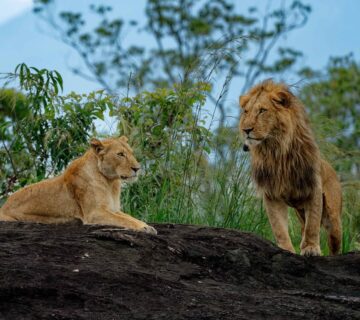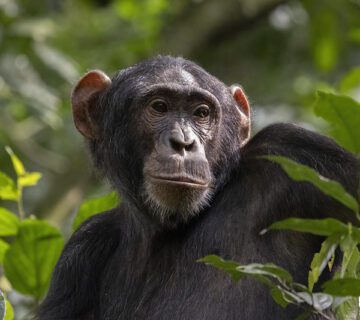Visitors planning a safari to Murchison Falls National Park may expect to participate in activities such as going to the top of the falls, wildlife drives, bird-watching, chimp trekking, nature walks, fishing, boat cruises, and camping, among others. A three-day safari to Murchison Falls National Park may not be enough time to perform all of the activities in the world’s largest national park; at least five days are required. However, some of the primary activities to do during a three-day trip to Murchison Falls National Park are included below.
Getting to the Top of Murchison Falls
Most tourists’ initial action is to climb to the top of the falls. The Murchison Falls are formed as the Nile River squeezes through a small valley on its journey to Egypt. Murchison Falls is considered the most powerful waterfall in the world after Victoria Falls. To go to the top of the falls, you don’t need a guide, although it’s best to travel in a group or someone who knows the region well. The view of the falls from the top is breathtaking.
One of the most remarkable sights in the park is the tremendous roar as the water fights its way down the valley before dropping 42 meters below. The mist created by the power of the water interacts with the sun’s rise to make beautiful rainbows that are breathtaking to witness. The mist from the waterfall provides a soothing and calming effect on a hot day or during the dry season, especially after a full day of activities. This location is ideal for photography, and you should not visit without a camera.
There is a walkway that leads down to the river or to the lesser Uhuru Falls before the Murchison Falls after seeing the cascade from the top. “The Crocodile Bar” is a must-visit. This is a place near the bottom of the falls where crocodiles congregate to await unfortunate animals and fish that are carried down by the tremendous water. Crocodiles of all sizes waited expectantly for their next prey.
Boat ride to the base of the falls
This is one of the most popular things to do in the park. The trip lasts around three hours, beginning and terminating at the bottom of the falls. The view from the top of the falls is stunning, with the water flowing down to the river creating deafening roars. After the falls, the Nile boasts plentiful wildlife, including some of Africa’s largest collections of hippos and crocodiles. Visitors can also view buffaloes, elephants, and numerous antelope species drinking along the river’s banks.
Bee-eaters, cormorants, ducks, fish eagles, herons, kingfishers, and shoebills are among the water birds. After snapping shots of the birds and animals, the skipper will wheel the boat upstream to the bottom of the falls, where tourists can dismount and hike up to level land.
Drives and game-watching
This is, without a doubt, the most pleasant activity in the park. Although game drives may be done alone, the presence of a park ranger makes it a more educational activity since they can help identify the sorts of birds and mammals or guide you to the best spots to find them. Expect to see buffaloes, crocodiles, elephants, giraffes, Hippopotamus, Leopards, lions, Monitor lizards, Side Striped Jackals, Spotted Hyenas, and warthogs on a three-hour game drive to Murchison Falls.
Among the antelope species found in the park are the Bohor Reedbuck, Bushbuck, Defassa Waterbuck, Hartebeest, Oribi, and Uganda Kob. Baboons, Black and White Colobus, Patas Monkeys, Vervet Monkeys, and Chimpanzees may be found in the Rabongo and Budongo Forests. Reptiles such as the African rock python, mambas, cobras, and various smaller snakes may also be seen in the park.
In addition to day game drives, tourists can choose a 2-hour night game drive. The chances of encountering predators like hyenas, lions, serval cats, and especially leopards increase during the night game drive. The rangers move with flashlights to ensure that no activity is missed. The night game drives begin late in the evening or when it begins to become dark.
Tracking rhinos in the Ziwa Rhino Sanctuary
The Ziwa Rhino Sanctuary is located on the road from Kampala to Murchison Falls National Park. Rhinos no longer wander Uganda’s national parks due to widespread poaching. The Ziwa Rhino Sanctuary was created to conserve the remaining rhinos while also expanding their numbers via meticulous breeding before returning them to larger parks once their numbers reach 20. The major activity here is rhino tracking on foot, which is normally overseen by sanctuary rangers.
The Rangers provide information on the rhinoceros, the sanctuary’s history, the breeding scheme, and overall conservation activities. They then take tourists on a feeding tour of the huge creatures. Aside from rhinos, the large refuge is home to tiny primates and bird species. Nature hikes are also available for visitors to witness species such as the shoebill stork. All admission fees are donated to rhino conservation initiatives. Seeing the Ziwa Rhino Sanctuary is best done before or after seeing Murchison Falls National Park.
Birdwatching
Murchison Falls National Park is one of the top spots in Uganda for bird watching. The activity is available during game drives and boat excursions. Murchison Falls, as a big park, offers several possibilities and sites to go birdwatching. Blue-naped Moosebird, Bluff-bellied Warbler, Chestnut-crowned Sparrow Weaver, Dark Chanting Goshawk, Denham’s Bustard, Double-toothed Barbet, Eastern Grey Plantain-Eater, Fawn-breasted Waxbill, Giant Kingfisher, and Goliath Heron are among the bird species found in the park. Grey Crowned Cranes, Green-winged Ptyilia, Grey-headed Bush Shrike, Hugli’s Francolin Long-tailed Nightjar, Long-toed Plover, Malachite Kingfisher, Martial Eagle, and more species of Northern Carmine Bee-eater, Northern Crombec, Osprey, Pel’s Fishing Owl, and more species
Piapiac, Pied Kingfisher, and Pennant-winged Nightjar Red-throated Bee-Eater, Red-throated Bee-Eater, Red-winged Grey Warbler, Rock Pratincole, Sacred Ibis, Red-throated Bee-Eater, Red-throated Bee-Eater, Red-throated Bee-Saddle-billed Stork, Sandpipers, Secretary Bird, Senegal Thick-knee, Shoebill Stork, Silver Bird, Bluff-bellied Warbler, Speckle-fronted Weaver, Speckle-fronted Weaver, Spotted Mourning Thrush, Spotted owl, Spotted Thick-knee, Spur-winger Geese, Squacco Heron, Standard-winged Nightjar, Sulphur-breasted Bush-Shrike, Swallow-tailed Bee-eater, Swamp Flycatcher, Vaseline Masked Weaver, Veracious Dove, Verreaux’s Owl, and Vitelline Masked Weaver, among others.
Trekking with chimpanzees in the Budongo forest
Budongo Forest, located to the south of the park, is part of the Budongo and Kaniyo Pabidi forest reserves. The forest is home to over 464 plant and animal species, including around 820 chimps. Because Jane Goodall has a study station in the jungle, chimp trekking is the most popular activity there. Chimpanzee tracking begins at 8 a.m. and concludes at about 3 p.m. The odds of sighting the chimps are good; however, it depends on the time of year.
The ideal months to visit the chimps are May and August. Trackers should never be bored in such a lovely forest with birds (about 360 species) and smaller primates like the black and white colobus, blue monkey, forest galago, pattos, and red-tailed monkeys. A knowledgeable and experienced guide frequently conducts tours for tourists to assist them in identifying the many varieties of birds, animals, and flora. The chimp habituation session can also be scheduled in the Budongo forest during times when there are fewer trackers. If you want to combine a safari with chimp tracking, you would require a 4-day Murchison Falls National Park safari.



